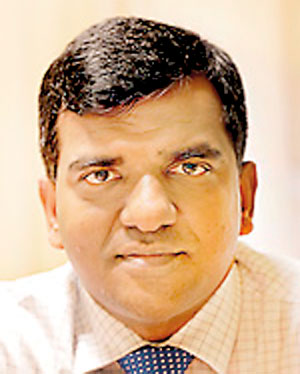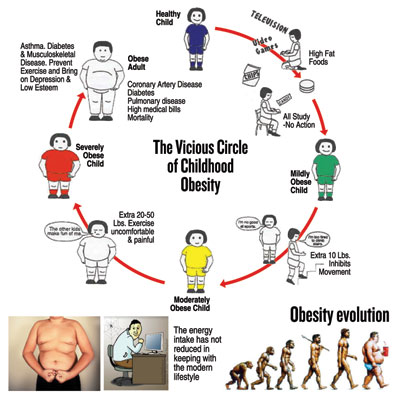News
Junk food, lack of exercise cause of increased NCDs, say specialist docs
View(s):World Obesity Day marked on Tuesday
By Kumudini Hettiarachchi

Dr. Navoda Atapattu
There is an urgent need for Sri Lankans to ‘beat the bulge’ to prevent them from slithering down the slippery slope to the depths of deadly non-communicable diseases (NCDs).
It is in this light that World Obesity Day was celebrated on Tuesday (October 11) with the theme ‘Combating Childhood Obesity’, for it is essential to catch them young to prevent the insidious build up of fat due to unhealthy lifestyles of junk food and lack of exercise, the Sunday Times learns.
Two Consultants, Endocrinologist Dr. Prasad Katulanda who treats adults and Paediatric Endocrinologist Dr. Navoda Atapattu who treats children point the way to healthy living, providing not only statistics but also giving simple tips.
“Action should be taken on different fronts to prevent and control the emerging epidemic of obesity which leads to NCDs,” reiterates Dr. Katulanda, pointing out that excess accumulation of fat creates metabolic changes. Earlier the thinking was that fat is inactive tissue but now it has been ascertained that fat is metabolically-active tissue and causes fat inflammation. There is liberation or release of fatty acids into the circulation, creating free fatty acids.
This leads to many dangers:
* A build-up of abnormal cholesterol
* Inhibition of insulin-producing (beta) cells in the pancreas
* Causing insulin-resistance
* Causing lipotoxicity which leads to Type 2 diabetes
* Causing a rise in blood pressure (hypertension)

Dr. Prasad Katulanda
“These are the risk factors for heart attacks and strokes, while obesity can also cause other serious issues such as heart dysfunction, fatty liver, sleep apnoea, kidney failure and sexual dysfunction,” says Dr. Katulanda, adding that a new trend which is of major concern is women dying of non-alcoholic cirrhosis due to fatty liver.
Referring to sleep apnoea, Dr. Atapattu describes day-time sleepiness or falling asleep while driving or working as a sign that the person has not had a good night’s sleep, while Dr. Katulanda details the process how there is continuous snoring, interspersed by sudden stops which result in the Carbon Dioxide (CO2) level in the blood increasing. The person then wakes up gasping for breath which is also a risk factor for high blood pressure, stroke and memory loss.
In girls and young women, obesity could cause Polycystic Ovarian Syndrome and sub-fertility issues. There could also be ‘mechanical’ problems such as back pain and knee pain due to excess weight and even social difficulties in finding marriage partners or trouble conceiving a baby after marriage, according to Dr. Atapattu. Children who are obese could face gynaecomastia and issues during puberty.
The cause of obesity is a ‘mismatch’ between calorie intake and expenditure and this would depend on appetite regulation in which the brain and neural systems are involved. Another factor that should be taken into account is family history.
According to these two Endocrinologists, the needs are:
n Immediate lifestyle changes which would include a healthy and nutritious diet and exercise.
n Strong policies against the promotion of unhealthy foods and beverages and regulation against using children in advertisements promoting such food and drink.
n Changes in societal norms which currently place much focus, sometimes solely, on academic achievement, ignoring not only extracurricular activity but even essential play-time. There should be a change in the way a family spends its leisure time. Earlier, there would be walks in the park or beach but now both adults and children would be glued to the TV, tabs or computers or addicted to their smart phones, with no outdoor activity.
Stressing that prevention of obesity in children should start when they are still in the womb, Dr. Atapattu talks of the major role mothers have to play in ensuring that their children do not gain weight.
Looking at evolution, meanwhile, Dr. Katulanda says that having descended from hunter-gatherers who had voracious appetites whose lifestyle was such that they ‘feasted’ when food was aplenty and ‘fasted’ when there was no food around, now what we are doing is feasting all the time because food is available. This is the main reason for obesity. “We should eat to meet our individual energy needs. The eating pattern of those toiling long hours in the field would definitely be different to others who sit at a desk in the air-conditioned comfort of an office. High-calorie juices, fizzy drinks, sugary milk, heavy carbohydrates and fatty food should be avoided. Those leading sedentary lifestyles need to cut down on the quantity of starch (rice, bread etc) being eaten.”
Dr. Atapattu adds that in many homes across the country, children are force-fed when very young and then they cannot stop eating large quantities when they are teenagers. This is why children’s food patterns should be looked at carefully from the time they are very young.

| Food : What and how much Next we discuss food and both Endocrinologists are quick to point out that people happily say that they are eating kurukkan rotti, rathu bath (red rice), mung, kenda (rice or kola) or even fruit. But the reality is that the portion-size is huge and even in kenda what is forgotten is that it is laced with coconut milk which has its very own fatty content. Some people, after a large glass of kenda or kola kenda also indulge in another meal, making it a double breakfast, says Dr. Prasad Katulanda, while Dr. Navoda Atapattu explains that a portion ‘exchange’ is the answer with regard to some food. Before dealing with portion exchange, she refers to the importance of ‘portion size’, with the plate being divided into half and one-half being divided into two quarters. The half should be vegetables and greens and the quarters should be starch (carbohydrates) and protein respectively. “If a person is planning to eat a large banana as dessert, then he/she should reduce the rice to half-a-tea-cup instead of one tea-cup. If planning to eat a big slice of papaw, then he/she should forego the rice altogether and eat only the vegetables, mallung and protein,” she says, adding that it is always better to include a portion of animal protein such as chicken or fish, rather than dhal in the meal as dhal has both protein and carbohydrate. Greens, greens and more greens should be the answer, says Dr. Atapattu, as Dr. Katulanda underscores the ‘non-value’ of sugar. “Sugar has only empty calories – there is no nutrition, no protein, no fibre, no minerals and no vitamins and what it does is makes us fat. Take as little sugar as possible – fewer than six teaspoons per day or ideally no sugar at all.” Here are some tips for healthy eating: * Drink a glass of water before a meal. * Eat slowly. *Eat a salad before the main meal, not with a creamy dressing but a vinegar-based dressing. Any amount of cucumber salad is permissible. *Go for raw, steamed or broiled vegetables. *Fill the plate with non-starchy and non-oily food. *Have only 1 tea-cup of rice. This would not apply to sportspersons, farmers or manual workers. *If eating bread instead of rice, it should be two slices of whole-meal bread, a portion of protein and a salad. *Use less spices – for when the food is very spicy, to cut out that, there is a tendency to eat a lot more rice. *Try to reduce the coconut milk (pol-kiri) intake by taking less gravy. *For the night, a bowl of soup could be taken with less carrot, no potato and no dhal. An egg could be added to it. *Fruits such as banana and papaw should not be eaten after a main meal but in-between meals, treating them as small meals. *Try flavoured tea instead of milk tea, without sugar. “Usually, when giving a gift, take a cake only if you really dislike that person and he/she is your enemy,” says Dr. Prasad Katulanda jokingly, adding that fruit would be a better and healthier option.
|

| Types of obesity Obesity could come in two forms, says Dr. Prasad Katulanda, explaining that it could be ‘central’ (visceral) — fat around the middle or ‘general’ – fat all over the body. Central obesity, to which Sri Lankans are very prone, has its own specific dangers because it causes more inflammation around the bowels and organs which leads to a lot of complications. There is a need to measure obesity, using both the Body Mass Index (BMI) and the waist circumference as yardsticks, it is learnt. In the case of waist circumference: * For males – the waist circumference should be <90cm *For females – the waist circumference should be <80cm With regard to BMI: *Overweight — if the BMI of an adult is >23 *Obese – if the BMI is >25. “For children, there are detailed charts indicating clearly what the BMI should be, taking into account the age and sex of the child,” says Dr. Navoda Atapattu.
|
| Physical activity Exercise is the other major component in healthy lifestyles, say both the Endocrinologists, explaining that a child needs to have some kind of physical activity or play-time outdoors for more than one-hour each day, while an adult needs a ½-hour at least five days a week. There should be a mix of ‘aerobic’ and ‘resistance’ exercises, it is understood, with the former including walking, using the treadmill, swimming and badminton and the latter lifting lightweights, stretching, push-ups and yoga. “Many are the parents who come up with the excuse that they live in apartments and as such their children have no gardens to play. A simple answer would be a skipping rope,” says Dr. Navoda Atapattu, as Dr. Prasad Katulanda adds that society as a whole should think of finding ways and means of leading a healthy lifestyle. Families, schools and workplaces should give it some thought and work into their schedules a healthy diet and also an exercise-oriented environment. |
(See also cover of MediScene)

